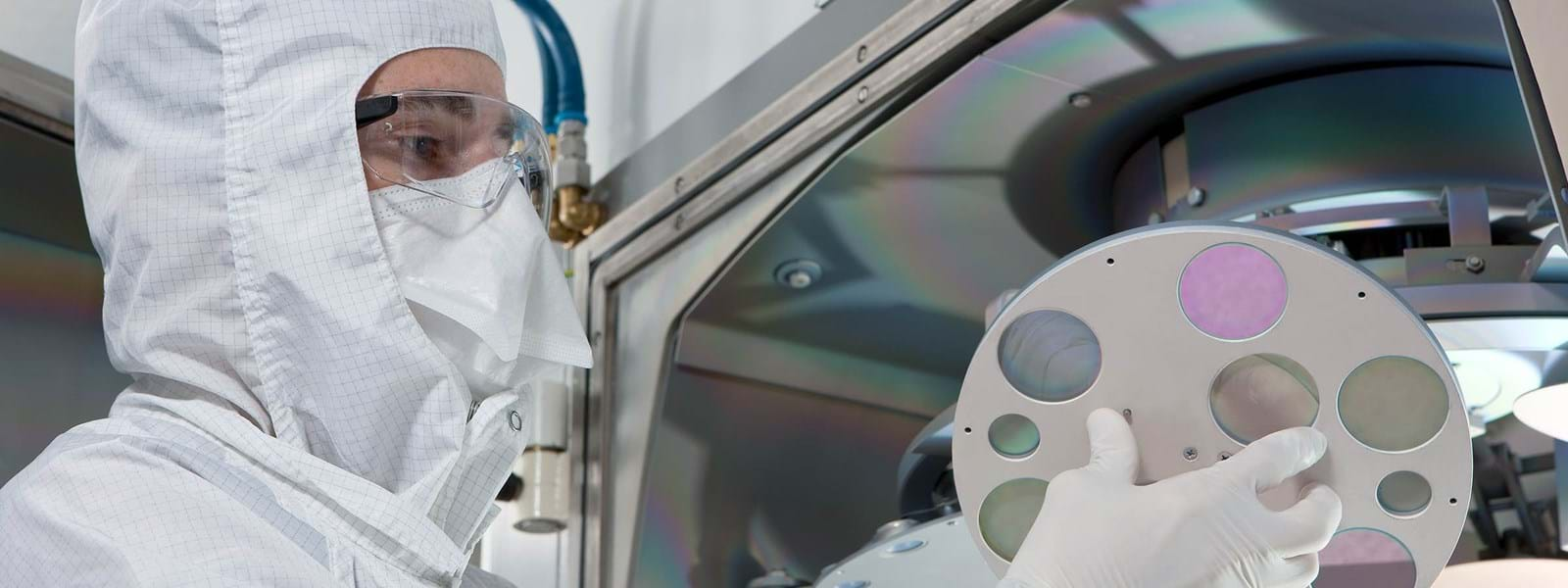Optical thin films
Our expertise in fabricating optical thin films is the product of thirty years of experience.

We use well-established evaporation techniques based on a reactive plasma- or ion beam–assisted evaporation process. Our oxide‑, halogen‑, and chalcogenide-based evaporation materials allow us to cover a spectral range from UV to far infrared. And our extensive collection of tools allows us to evaporate on different types and dimensions of substrate, lenses, and optical fibers.
Three decades of experience and expertise in optical thin film (OTF) deposition have left us well equipped to develop innovative solutions in response to our clients’ specific needs. Using our optical thin film simulation tools, we can design complex multilayers such as high reflectors, dichroic filters, band‑pass filters, and broadband antireflection coatings to your exact specifications. Plus, with our optical measurement capabilities—spectrophotometry, ellipsometry, FTIR spectrometry, microscopy, and profilometric measurements—we’re able to fully characterize the optical properties of our thin films, from UV (200 nm) to the far infrared (650 µm).
Our plasma- and ion beam–assisted thin film deposition systems deliver outstanding adhesion on many different substrates. They also create thin film stacks whose density is often equal to or greater than the raw substance, resistant to cryogenic temperatures and with high optical damage thresholds. The use of a reactive vapour phase for physical evaporation produces high evaporation rates for the fabrication of thick, complex stacks. Heat can be integrated into the process to optimize the desired properties of the thin films thus deposited. Monitoring the process optically or using a crystal makes it easier to control the thickness of the thin films and achieve the continuous high‑capacity evaporation needed to create multiple stacks for use in complex designs. The planetary systems used to hold the substrates ensure uniformity on complex shapes and on surfaces up to 20 cm (8 in.) in diameter. Specific procedures and equipment are required when using chalcogenides and halogens in order to safely store, handle, evaporate, and characterize these toxic materials.


